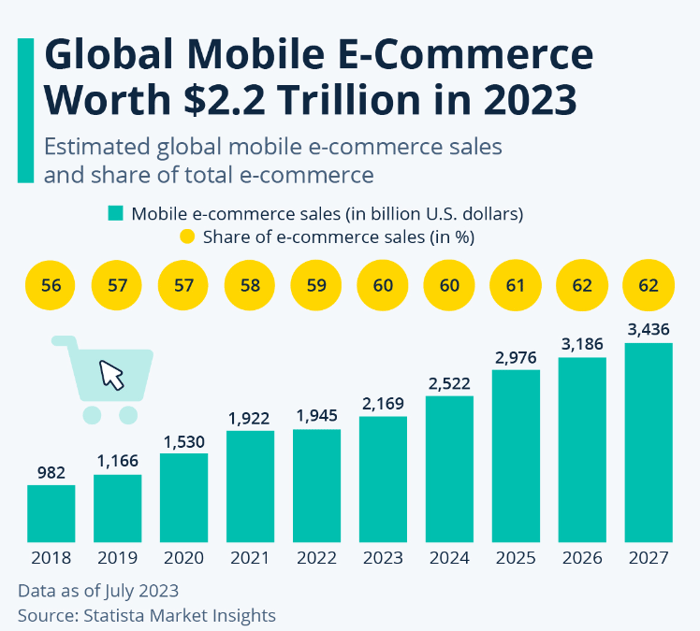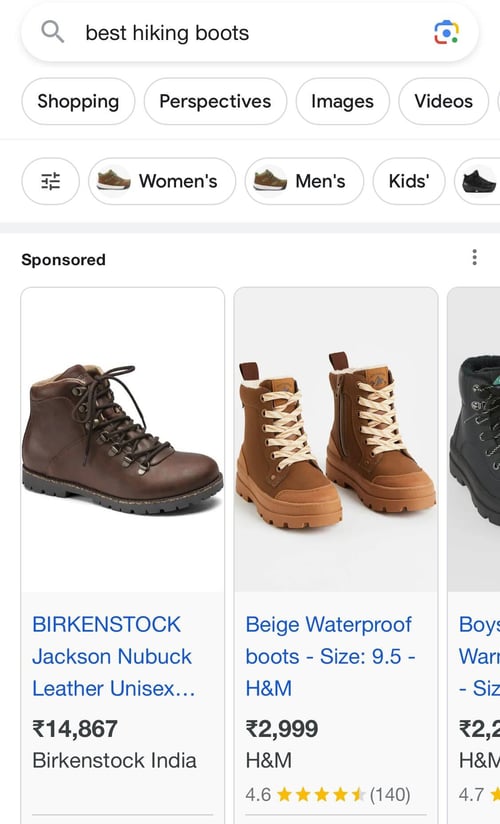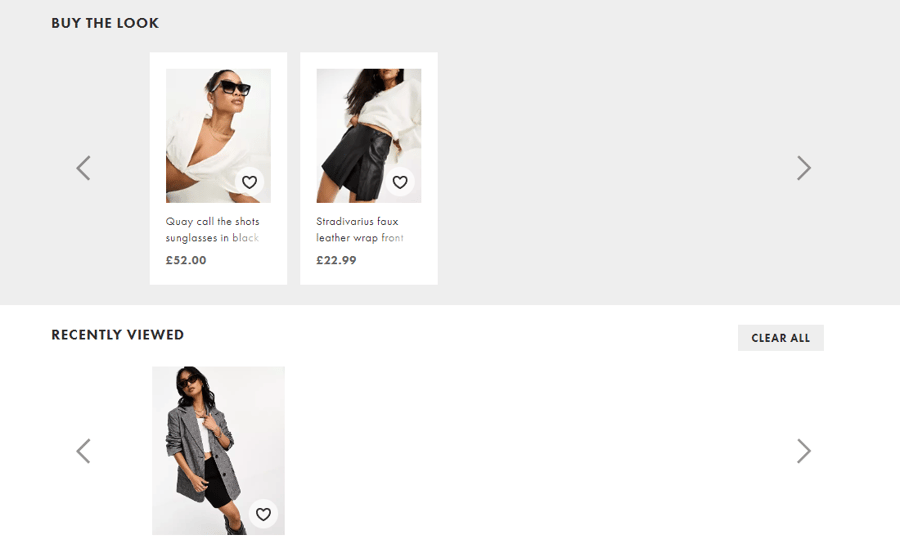
For growing eCommerce brands, success often relies on capturing fleeting opportunities — the pivotal moments when potential buyers are just a few clicks away from making a purchase.
For example, someone Googles “best running shoes for beginners” or “oil-free moisturizer.” At that moment, their intent is clear — to purchase a product.
These are the micro-moments that matter.
The question is, is your brand equipped to capture their attention?
You don’t need to be a clairvoyant to anticipate these moments. You need the right strategy to take potential customers through the sales funnel.
In this article, we’ll explore intent-rich moments and understand why they are the lifeblood of eCommerce.
What are Micro-Moments?
Micro-moments are the critical instances in a buyer’s journey when they turn to their devices, often in the form of a quick search, to fulfill a need or answer a question.
These moments hold high intent and a sense of urgency since people want immediate solutions, information, or purchase opportunities. They are considered relevant for eCommerce brands since they profoundly impact consumer decisions and shape brand interactions.
In these brief windows of opportunity, businesses can capture a potential customer’s attention or lose it to competitors.
There are four types of micro-moments:
- I-want-to-know moments
- I-want-to-go moments
- I-want-to-do moments
- I-want-to-buy moments
So, marketers must be aware of these moments to increase conversions.
Why Micro-Moments Matter in eCommerce

Statista’s Market Insights states that mobile eCommerce makes up 60% of global eCommerce sales. Shoppers are no longer tied to a desktop computer, patiently navigating websites for hours.
Instead, they now have advanced smartphones that can lead to a series of micro-moments. These have grave implications for online businesses like:
Changing consumer behavior
Smartphones have made information accessible with a single touch or a voice command. This shift has led to an “on-demand” culture where consumers expect instant answers and solutions.
You must take advantage of this behavior by optimizing your website for SEO and running PPC ads. That way, your pages will appear when someone looks for products in your niche.
Impact on the customer journey
Micro-moments follow the customer journey at critical junctures with urgent queries. For instance, a user searching for the “best smartphone under $1,000” is signaling a desire to purchase. If your eCommerce brand is not there to provide the information and options they seek, you risk losing a sale to competitors.
Consider these statistics:
- According to a Think with Google report, 60% of smartphone users have directly contacted a business via the search results.
- The Harvard Business Review reports that 93% of people Googling something end up purchasing a product, and 82% use their phones in-store to decide on their upcoming purchase.
- Research by Statista reveals global mobile commerce sales are projected to reach $2.5 trillion by 2024, underlining the significance of these moments in driving conversions.
So, being present and responsive during these micro-moments isn’t optional for business success — it’s critical. Brands that can quickly deliver relevant information, help decision-making, and simplify the buying process will thrive in this era of instant gratification.
How to Capture Micro-Moments in eCommerce
As we shared earlier, you don’t need to be clairvoyant to anticipate customer needs. You simply need an ironclad plan that covers all bases. Start by following these steps:
1. Understand your customer’s journey.
Before implementing micro-moment strategies, focus on your overall customer’s journey. Identify touchpoints, pain points, and critical decision-making moments. Understanding where micro-moments fit within this journey provides a solid foundation for formulating strategies that resonate with your audience.
For instance, Damian Grabarczyk, co-founder of PetLab Co., shares, "We once believed we knew our customers inside out. But diving deep into their journey, especially during micro-moments, was eye-opening. I recall noticing a surge in searches for 'natural pet supplements.' Instead of just pushing products, we focused on educating our customers about the benefits, the sourcing, and the love behind each product. It wasn't just about selling; it was about building trust. Understanding your customer's journey isn't just a strategy; it's the heart of genuine customer connection."
2. Optimize for mobile experiences.
Mobile optimization is vital to capturing micro-moments, as these mostly happen on smartphones. Combine mobile responsiveness with fast-loading web pages to ensure a seamless mobile experience. A user’s ability to access information quickly and effortlessly directly influences their decisions during such moments.

Let’s say someone searches for “best hiking boots.” A mobile-optimized website with quick load times can instantly provide them with the information they need, increasing their chances of staying on the site and purchasing. In the above screenshot, H&M loads quicker than Birkenstock and shares product ratings. So, the likelihood of a purchase from H&M increases drastically.
3. Implement a data-driven SEO strategy.
While SEO is fundamental, a data-driven approach is essential for success in micro-moments.
Analyze user behavior to uncover what your customers search for during these pivotal moments. Target the right keywords and topics to ensure your content matches their needs to increase your visibility and relevance.
Let’s say you notice a surge in searches for the “best eco-friendly apparel brand.” You can create content and product listings that cater specifically to this trending micro-moment, meeting the evolving demands of your audience.
You can use tools like Google Trends, Trendwatchers, Reddit, and Quora to see what’s trending. Then, prepare your keywords and optimize your product pages to show up on SERPs.
4. Craft content for each micro-moment.
Tailor your content to align with specific micro-moments. Provide informative content for ‘Knowing’ moments, persuasive product descriptions for ‘Buying’ moments, and guidance for ‘Doing’ moments. Customizing content to meet the diverse needs of micro-moments will enhance user engagement.
Here’s an example for each:
- Knowing Moments: A user searches “how to plan a camping trip.” Write a comprehensive blog post or shoot a video tutorial with camping tips, gear selection, and other relevant guidance.
- Buying Moments: For “best DSLR cameras under $500,” feature product descriptions, reviews, and clear buy buttons for a smooth purchase process.
- Doing Moments: When someone searches “how to set up a tent,” provide a user-friendly visual guide addressing common challenges and offering practical tips. Take a cue from Wikihow to create a step-by-step visual journey.
5. Leverage user-generated content and reviews.
Encourage existing customers to share their experiences and product reviews. For instance, if you run a fashion eCommerce store, showcase images of customers wearing your clothing or accessories and reviews. As a second option, you can always use different types of interactive emails to collect feedback and connect with your customers more profoundly and personally.
These authentic testimonials build trust and can sway the decision in your favor during micro-moments. When a potential buyer searches for “stylish summer dresses,” seeing photos of satisfied customers wearing your dresses, along with glowing reviews, can nudge them towards a purchase.

So, incorporate user-generated content and reviews convincingly throughout your website to positively influence micro-moments. You can create a single UGC landing page like Calvin Klein’s #mycalvins to encourage more participation.
6. Use push notifications and alerts.
Try push notifications and alerts as a direct channel to engage users during micro-moments.
How? When a customer has added an item to their cart but still needs to complete the purchase, send a push notification with a subtle reminder and perhaps an incentive like a discount.
Let’s say a user adds running shoes to their cart but leaves the website. A well-timed push notification stating, “Don’t miss out! Complete your purchase now to get 10% off on your running shoes,” can re-engage them and lead to a conversion.
These notifications keep your brand at the forefront of users’ minds and encourage them to take immediate action, making these alerts a powerful tool for capturing micro-moments.
However, be mindful so you don’t overuse them since relevance and timing are crucial to their effectiveness. Also, overdoing it can put people off.
7. Invest in location-based marketing for ‘Going’ moments.
These moments are tied to physical locations and present a prime opportunity for location-based marketing strategies.
Leveraging geotargeting and location-based advertising can guide users to your physical stores, events, or service points precisely when they are nearby.
Content localization can enhance the effectiveness of location-based marketing strategies by tailoring the message to resonate with the culture and preferences of a specific geographic audience, further increasing engagement and conversion rates.

For example, if you sell travel bags, you can run Google ads for users searching for nearby options. You can sweeten the deal by sharing exclusive discounts. This timely outreach can influence their decision and drive them to your store.
When you capitalize on such ‘going’ moments through location-based marketing, you can significantly increase foot traffic and enhance user experience since customers receive relevant offers and information when and where they need it most. This targeted approach ensures your brand remains top-of-mind during the most crucial micro-moments.
8. Implement chatbots for real-time assistance.
Chatbots are ideal for providing instant support during micro-moments. These AI-powered assistants can:
- Engage users in real-time
- Answer questions
- Offer product recommendations
- Guide visitors through their decision-making process
Let’s say a potential customer is exploring your website and has questions about product specifications. A chatbot can swiftly provide accurate information to enhance their shopping experience.
But your chatbot must be well-programmed to handle common queries and seamlessly transition users to human agents when needed for a better customer experience.
9. Personalize the shopping experience.
Personalization is a non-negotiable in capturing micro-moments, particularly during ‘buying’ moments when customers are ready to purchase.
Two key personalization elements are:
Product Recommendations
Tailoring product recommendations based on a customer’s browsing and purchase history is a great way to engage users during decision-making moments.
For example, when a shopper adds running shoes to their cart, you should suggest complementary items like moisture-wicking socks or a running jacket. It enhances their shopping experience by saving time and encourages them to explore and add more items to their cart, increasing the order value.

You can also have a “buy the look” section like Asos to simplify decision-making.
Streamlined Checkout
A complicated checkout process can discourage customers from purchasing from you.
Streamlining this experience by minimizing steps and offering guest checkout options can significantly reduce friction. Allow users to save their shipping and payment information for future purchases, making it even more convenient.

For instance, Amazon’s one-click checkout is a prime example of a streamlined process that facilitates transactions during micro-moments and boosts conversions.
10. Continuously analyze and adapt to customer behavior.
Ongoing customer behavior analysis helps brands stay ahead during pivotal moments.
By closely monitoring user interactions, feedback, and conversion metrics, businesses can identify emerging micro-moments or shifts in existing ones. This proactive approach lets you adjust strategies to keep them relevant.
For example, if there is a surge in mobile searches for “eco-friendly packaging,” you can tailor your offers and content to cater to this trend and gain a competitive edge. Continuous adaptation based on real-time customer insights lets you maximize opportunities and maintain relevance.
Moving Forward
Micro-moments can be a game-changer, especially if you’re a growing eCommerce brand. Most online consumers are millennials and Gen-Z, and they want immediate results. Also, their purchases result from these fleeting yet powerful moments.
Businesses must recognize the significance of micro-moments and their power to influence consumer decisions. Also:
- Valuable content, responsiveness, and streamlined buying processes are essential to winning micro-moment buys.
- You must prioritize and invest in micro-moment strategies to remain competitive.
When you invest in plans that cater to the desires of on-demand consumers, you turn them into lasting customer relationships. So, embrace micro-moment strategies, invest in these critical touchpoints, and watch your marketing efforts flourish.





Leave a reply or comment below